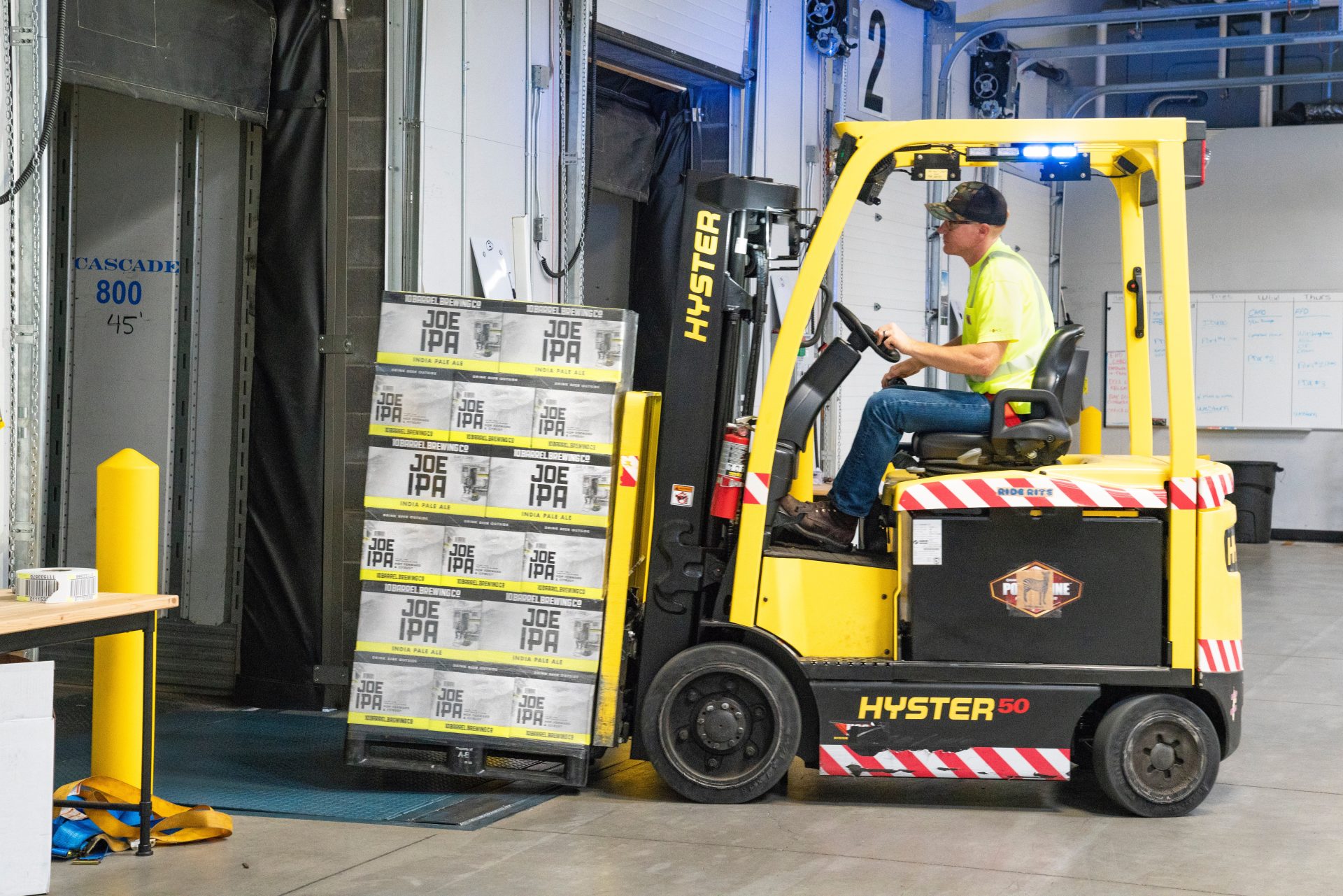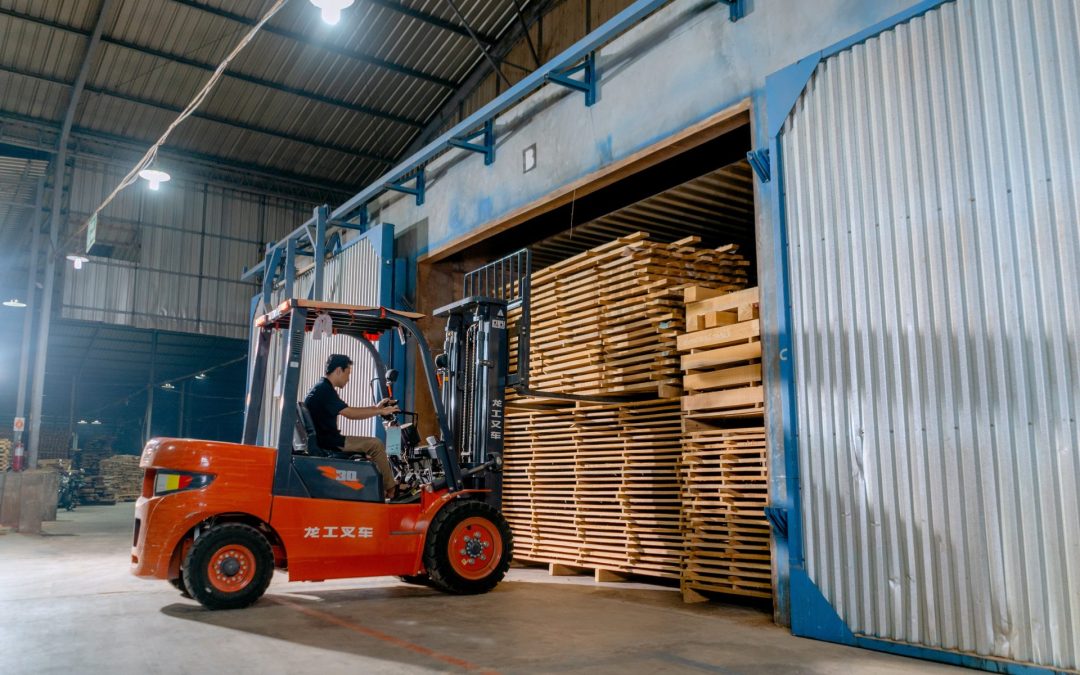Forklifts are among the most commonly used materials handling equipment in warehouses, construction sites, and industrial settings. They are designed to lift and transport heavy loads with ease, making them essential for various industries. Forklifts come in different types, each with unique features, capabilities, and applications. In this article, we will discuss ten common forklift types, their classification, and their uses.
-
Counterbalance Forklifts
Counterbalance forklifts are the most common type, designed to balance heavy loads on their forks without tipping over. They weigh the back of the truck, which counterbalances the weight of the load on the forks, hence the name “counterbalance.” These forklifts can be used indoors or outdoors and are suitable for lifting heavy loads to high heights. Counterbalance forklifts are ideal for warehouses, manufacturing plants, and loading docks.
-
Reach Forklifts
Reach forklifts are commonly used for stacking and retrieving pallets in narrow aisles, making them suitable for use in warehouses with limited space. They have an extended mast that allows the operator to lift loads to great heights and reach deep racks. Reach forklifts are ideal for use in warehouses and distribution centers.
-
Order Picker Forklifts
Order picker forklifts are designed to enable the operator to pick individual items from shelves at great heights. Their platform allows the operator to stand on and pick orders from racks. The platform can be raised and lowered, allowing the operator to work at different heights. Order picker forklifts are ideal for use in warehouses and distribution centers.
-
Pallet Jacks
Pallet jacks, or pallet trucks, are the simplest type of forklifts. They are used for moving pallets around the warehouse, loading docks, or manufacturing plants. They have two forks that slide under the pallet, allowing the operator to lift and move the pallet with ease. Pallet jacks are ideal for warehouses, distribution centers, and loading docks.
-
Rough Terrain Forklifts
Rough terrain forklifts are designed for outdoor use, especially in construction sites and agricultural settings. They have large, thick tires that enable them to navigate rough terrain easily. Rough terrain forklifts can lift and move heavy loads, making them ideal for use in construction sites and agriculture.
-
Side Loader Forklifts
Side loader forklifts are designed for narrow aisles and tight spaces. They have a unique feature where the operator sits on the side of the truck, allowing them to maneuver the forklift easily. Side loader forklifts are ideal for warehouses, manufacturing plants, and distribution centers.
-
Telescopic Handler Forklifts
Telescopic handler forklifts, or telehandlers, are designed for lifting and placing materials on construction sites, agricultural settings, and other outdoor settings. They have an extendable arm that can reach great heights and distances, allowing the operator to lift and place materials in hard-to-reach places.

-
Walkie Stacker Forklifts
Walkie stacker forklifts, or walk-behind stackers, are similar to pallet jacks but can lift and stack loads. They are designed to operate in narrow aisles, making them ideal for use in warehouses with limited space.
-
Industrial Reach Forklifts
Industrial reach forklifts are designed for heavy-duty lifting in large warehouses and manufacturing plants. They have a high lift capacity, allowing them to lift heavy loads to great heights. Industrial reach forklifts are ideal for heavy-duty applications requiring high liftings, such as construction and manufacturing plants.
-
Turret Trucks
Turret trucks, also known as very narrow aisle (VNA) trucks, are designed to operate in aisles as narrow as 1.8 meters. They have a unique feature where the forks can rotate up to 180 degrees, allowing the operator to place loads on either side of the aisle. Turret trucks are ideal for use in warehouses and distribution centers with limited space.
Classification of Forklifts
Forklifts can also be classified based on their power source. The most common forklift power sources are electric, gas, and diesel.
-
Electric Forklifts
Electric forklifts are powered by rechargeable batteries and are suitable for indoor use. They are quiet and emit zero emissions, making them ideal for warehouses and distribution centers.
-
Gas Forklifts
Gas forklifts are powered by propane or natural gas and are suitable for indoor and outdoor use. They emit fewer emissions than diesel forklifts and are ideal for use in manufacturing plants and construction sites.
-
Diesel Forklifts
Diesel forklifts are powered by diesel fuel and are suitable for outdoor use. They have a higher lift capacity than electric and gas forklifts and are ideal for heavy-duty construction site and port applications.
Uses of Forklifts
Forklifts are versatile equipment used for various applications in different industries. Some of the uses of forklifts include:
- Loading and unloading goods from trucks
- Transporting heavy loads in warehouses and distribution centers
- Stacking pallets in narrow aisles
- Placing materials on construction sites
- Lifting heavy machinery and equipment
- Moving heavy loads in ports and airports
- Loading and unloading cargo ships and airplanes
- Handling agricultural products
- Assisting with inventory management
- Lifting and placing heavy loads in manufacturing plants
Conclusion
Forklifts are essential equipment for handling materials in different industries. They come in various types, each with unique features and capabilities, making them suitable for different applications. Forklifts can be classified based on their power source, and their uses range from loading and unloading goods from trucks to lifting and placing heavy loads in manufacturing plants.
Related Video

